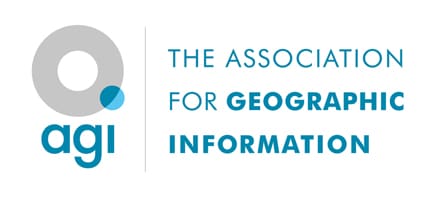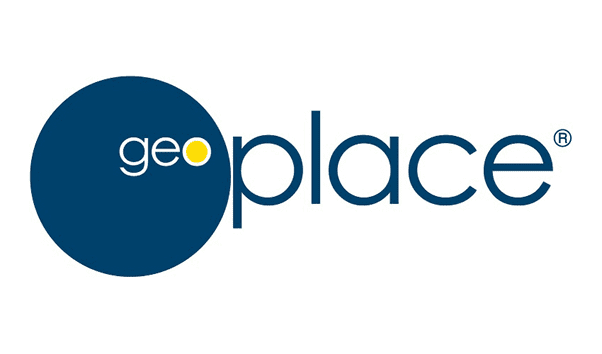Over 879 people registered to attend this year’s GeoPlace’s 2021 conference, taking advantage of an online format that enabled delegates to interact with speakers presenting on this year’s theme, ‘Places for People’.
The online platform we used facilitated 114,577 page views with an average visit time of 142 minutes. 174 questions were posed to speakers and 346 people participated in the polls. All of this together with an excellent and inspiring set of speakers led to an engaging and useful two days.
As is in previous years, delegates attended from not only the emergency services, and the councils responsible for creating and maintaining the UK’s address and street information, but also from central government. In short, this two-day conference once again showcased the value of using location data to improve our quality of life – the public sector in particular relies on the work of the Data Cooperation Agreement (DCA) community, and the conference sessions looked in depth at some of the drivers for ongoing data improvements. This enabled a highly productive debate to take place alongside the livestream over the two full days, as delegates listened to influencers and experts in the use of address, street and geographic information.
Outstanding work by the DCA community
Nick Chapallaz, Managing Director of GeoPlace, opened the conference with a heartfelt speech. He extended his respect and thanks to all of the Address and Street Custodians, Street Naming and Numbering Officers, and location specialists working within their local authorities and with GeoPlace for their contributions and hard work over the last year. Many individuals had gone above and beyond the call of duty to enable better data sharing through the use of Unique Property Reference Numbers (UPRN) and Unique Street Reference Numbers (USRNs) during this time, and there is no debate that the tireless efforts of these professionals helped to protect and save many lives. Granular location data informs policy-making, it connects people to the provision of vital health services, and enables central and local government to identify those places where care has been needed most – reducing costs and risks, increasing effectiveness of vulnerable healthcare and vaccination services particularly.
UPRNs will drive efficiency in government
The conference keynote speech was delivered by The Right Honourable Christopher Pincher MP, the Minister for Housing. He, too, extended the thanks of government: recognising the work undertaken in local authorities, and the tireless effort being undertaken to help keep services running and provide the location information needed to protect Britain’s families. He then spoke at length not only on the take-up of the UPRN in government, but also more generally on the importance and potential for widespread, joined-up use of location data. He emphasised that many if not all of barriers to progress in the housing sector could be removed via the ubiquitous adoption of UPRNs and USRNs, as they bring simplicity and agility to all processes. UPRNs make it easier to share data, make informed decisions, and put everyone ‘on the same digital page’.
The Minister was highly supportive of the need for central agencies to be less siloed in their use of location data. “If we can broaden the take-up of UPRNs through planning reform,” he said, “that in itself will drive take-up by other government departments and agencies”, which will further aid growth and progress in the sector. The Minister also noted that central government wants to broaden engagement with the housing sector and accelerate the processes involved to embed the UPRN in more datasets. He noted: “Every time a UPRN is used, its value increases,” and emphasised that government is committed to providing local authorities with the resources and tools needed, so that UPRNs and USRNs can carry on stimulating innovation.
This first session of the day continued with a presentation by Thalia Baldwin, Director of the Geospatial Commission. “What continues to be important as we are developing geospatial strategy, is collective action that results in real life improvement,” she said, “so that senior decision makers can see how an investment in location data will make a huge difference to efficiency and effectiveness.”
Location data is key for PropTech and progress in the land and property sector
The overarching sentiments surrounding the connection of people to place through the use of granular location data was echoed by Andrew Bulmer, CEO at the Institute of Residential Property Management. He reiterated his support for greater adoption of the UPRN across the housing sector, noting that it would reduce the need for landlord licensing schemes, reduce the cost of operating those schemes, help to identify rogue landlords – important not only for local authorities but also for HM Revenue and Customers – and, ultimately, reduce rent burden on tenants. Sammy Pahal, Managing Director of the UK PropTech Association, added to this by listing many of the benefits provided by greater adoption and use of location data. It enables innovators to better assess risk, identify opportunities, optimise buildings, create more realistic data models that can inform planning, and – an increasingly important point – enable reductions in carbon emissions.
The first day continued with a series of presentations on the drive for greater national efficiency, looking at how change will impact local authorities, and how they can benefit from being ahead of the game – collaborating to deliver national infrastructure projects. From policy-making managers to front-line key workers, everyone wants critical resources to be managed efficiently. With COVID-19 affecting us all, we’ve never been more dependent on the ability of our health services, local and central government to deliver vital support measures and services exactly where they’re needed most.
Speakers in the ‘Local to national; collaborating to deliver national infrastructure projects’ included David Capon, CEO of JAG(UK), Tony Sceales, Head of Programme Development at the Department for Culture, Media and Sport, Anthony Ferguson, Head of Traffic and Technology at the Department for Transport, DfT and Adam Jennison, Hull City Council, ICT Principal Lead – Smart City. They introduced delegates to many of the achievements being made to the nation’s transport network and in recent 5G rollout, thanks to the use of granular location data.
UPRNs – vital work, saving and protecting lives
The first day of the conference continued with a series of presentations on the use of location data in health and social care and in identifying and supporting vulnerable people. These highlighted how important location data has become, for all of us, in handling the recent health crisis.
Tim Adams, Programme Manager at the Local Government Association launched a new report researched and written by GeoPlace and commissioned by the LGA on how UPRNs were used by councils to respond to identify and support people during the COVID-19 pandemic. Shaun Powell gave a barnstorming presentation on how master data management was used to identify and protect Wales’ most vulnerable during the pandemic and Riley Marsden, Business Intelligence Technical Lead from Barnsley Council looked at how the council had linked data to support the COVID-19 response. Given the short presentation slot, Riley particularly focused on how he has used data from Public Health England in test and trace and self-isolation support.
Huw Jakeway, Chief Fire Officer QFSM of the South Wales Fire & Rescue Service set out the importance of knowing exactly where people needed help most, not only in response work but also in preventative action. Tony Bracey, Head of Programmes at the Welsh Government then prefaced a series of presentations that looked in-depth at the life-changing and life-saving impact of using the UPRN in providing health and care services, particularly for the most vulnerable in society.
Paul Withers, Data Protection Manager at Walsall Council gave a whistle stop guide to the MAST project -Multi-Agency Safeguarding Tracker. The project is a co-funded accelerator project between the LGA and NHS Digital using data sharing to boost safeguarding. Graham Hyde, Intelligence Manager supporting the development of Local Care Partnerships in Leeds continued the theme by outlining how organisations in Leeds are working together and sharing information during the COVID-19 pandemic to enable Clinically Extremely Vulnerable (CEV) people to stay happy and healthy at home.
Jo Mann, Public Safety Risk and Intelligence Manager, Humberside Fire and Rescue Service finished the session with a presentation outlining the challenges of identifying vulnerable people and businesses in Humberside – identifying the who, the what, the when and the why of public safety and why UPRNs are such an essential tool in enabling this.
Second day focus on drivers, business cases for, and benefits of using location data
In a change to previous years, the GeoPlace conference took place over two days. The second day provided an opportunity to surface many of the ‘behind the scenes’ benefits of embedding and using geospatial information widely in local authorities – giving those with less geospatial experience an insight on the strategic view for using location data in local authorities. Nick Chapallaz reiterated the gratitude due to professionals working with and in local authorities to deliver high-quality data and services, focussing on the need for greater inter-department liaison and the analytics that are improving everyone’s quality of life.
Nadira Hussain, Director of Leadership Development and Research at SOCITM, looked at the role of data in improving public service delivery post-pandemic; Juliet Whitworth, Research and Information Manager at the Local Government Association provided a long-term overview of the value for UPRNs in local authority use and how local authorities can make better use of data.
Andrew Coote, CEO at ConsultingWhere, provided an insightful presentation on creating a successful business case. He emphasised the importance of remembering that decision-makers usually aren’t specialists in location or data management. What they need most, is a clearly articulated case that explains the case, the reasons for investment, the challenges being overcome and the benefits that will be delivered for the organisation and its customers or wider audience.
Rewards and awards
The second day’s presentations continued with insightful contributions from David Henderson and Matthew Ricketts, respectively Chief Geospatial Officer and Senior Technical Consultant at Ordnance Survey, providing an overview of ‘Who Uses Your Data’. This was followed by a slightly more technical and revealing seminar led by key team members from GeoPlace, looking at property lifecycle content and processes that will help to improve the timeliness of data. In this session, speakers explored the evolving address management relationships with organisations such as the Department for Transport, the VOA, HM Land Registry, Royal Mail and other partners.
Finally, the GeoPlace 2021 conference concluded in the now traditional celebration of this community’s outstanding achievements over the last 12 months. As Principal Chairs of the DCA Regional Address and Streets Groups, Cathy Coelho and Keith Curran outlined the progress made in the last year, despite the very real difficulties caused by the nation’s health crisis – and the last presentations highlighted the work of the DCA community, and announced the winners of GeoPlace’s Exemplar and Peer Awards before finishing with a wide ranging panel discussion.
By Gayle Gander, Head of Marketing, GeoPlace
Disclaimer: The publication of AGI member press releases is a member service. The AGI neither approves or endorses the contents of a member’s press release, nor makes any assurance of their factual accuracy.

